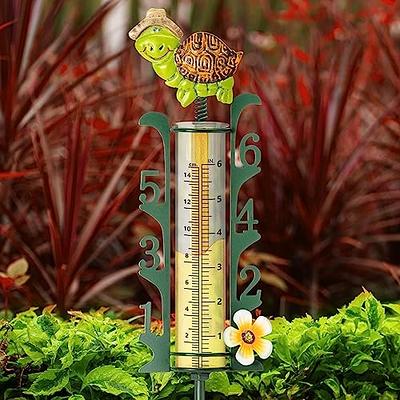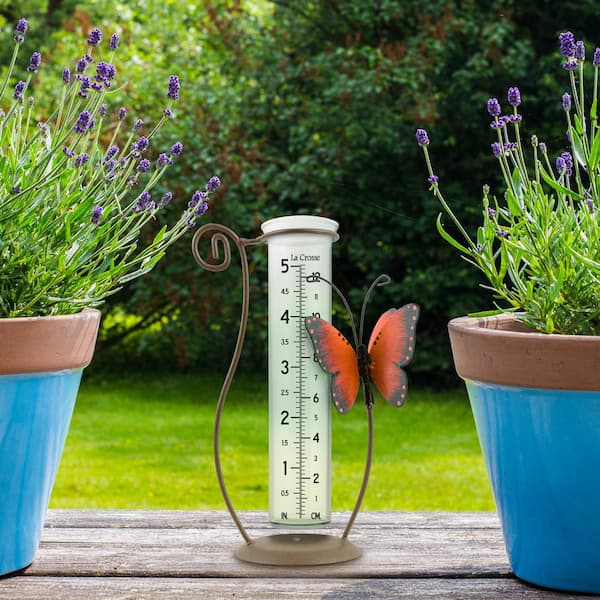Study The Rain Gauge: From Historical Development to Modern Applications
Wiki Article
Exactly How to Choose the Right Rainfall Gauge for Accurate Rainfall Information
To get dependable measurements, it is important to pick the appropriate rain gauge. Taking into consideration variables such as area, type, and precision of the rain gauge will certainly help make certain accurate data collection. In addition, comprehending the maintenance and calibration treatments will contribute to the long life and dependability of your rain scale.Importance of Choosing the Right Rainfall Gauge
The relevance of picking the right rain gauge lies in obtaining precise and trustworthy rainfall data for exact meteorological analysis. Rain information is vital for a wide range of applications, consisting of weather projecting, hydrological modeling, and climate research study. Unreliable or unreliable data can lead to incorrect final thoughts and flawed decision-making procedures.
Secondly, the precision and accuracy of the rainfall gauge are extremely important. The gauge should be able to gauge rainfall with high accuracy, recording even little amounts of rainfall accurately.
Moreover, the location and installation of the rainfall scale are vital factors to consider. It must be placed in an open location, far from obstructions that might impact rains measurements. The scale ought to be positioned at an ideal height and angle to stay clear of spilling and make certain correct catchment of rain.
Elements to Think About When Selecting a Rain Scale
When selecting a rainfall scale, there are a number of vital variables to consider. There are different kinds offered, including typical rain evaluates, tipping bucket rainfall assesses, and evaluating rainfall determines.Another element to take into consideration is the product of the rain scale. Rain determines can be made from different products, such as plastic, steel, or glass. The material chosen must be resistant and resilient to climate condition, ensuring that the rain scale will certainly withstand the aspects and give accurate dimensions with time.
Accuracy is also a vital variable to think about. Search for rain determines that have actually been adjusted and checked for precision. Attributes such as anti-splash rings and funnels can likewise enhance the accuracy of the dimensions.

Lastly, take into consideration the climate and atmosphere in which the rain scale will certainly be utilized. Different rainfall determines appropriate for various climates, so it is crucial to choose one that is appropriate for the conditions in your area.
Various Sorts Of Rain Gauges Offered
To even more discover the factors to take into consideration when picking a rain scale, it is very important to comprehend the various sorts of rainfall assesses offered. There are several kinds of rain assesses, each with its own benefits and disadvantages. One of the most common kind is the common rainfall scale, also understood as the cylindrical rain scale. This type includes a straight-sided cylindrical container with a funnel-shaped top. It is basic to make use of and offers exact measurements of rains.One more kind of rain gauge is the tipping bucket rainfall gauge. As the rainfall falls right into the scale, it fills up one side of the bucket, triggering it to clear the water and tip.
A third type of rain scale is the weighing rain scale. As the rainfall falls into the scale, it is accumulated in a container linked to a balance.
Ultimately, there are also remote rain evaluates that use advanced innovation to measure rainfall (The Rain Gauge). These determines usage sensing units and transmitters to send out data wirelessly to a central device. Remote rain gauges are practical for keeping an eye on rains in hard-to-reach areas or for large information collection
How to Figure out the Precision of a Rainfall Gauge
One means to examine the precision of a rain gauge is by performing routine calibration measurements. Calibration includes contrasting the analyses of a rain scale to a basic dimension, such as a qualified rain gauge or a weather terminal with high accuracy. By contrasting the dimensions, any type of discrepancies or inaccuracies in the rainfall gauge can be recognized and accounted for.To perform a calibration measurement, start by accumulating rainfall information from both the rain scale and the typical measurement tool over a certain period, such as a month. Compare the analyses and compute the distinction in between them. This distinction is referred to as the calibration mistake.
It is very important to note that calibration dimensions need to be done regularly, as ecological variables, such as particles, wind, and temperature level, can affect the accuracy of the rainfall scale over time. By carrying out normal calibrations, any kind of changes in the precision of the rain gauge can be read the article identified and changes can be made as necessary.
In addition to calibration, it is likewise recommended to tidy and maintain the rainfall gauge on a regular basis to ensure its accuracy. Get rid of any type of particles or obstructions that may impact the accuracy of the measurements, and look for any type of indications of damage or use that may call for fixings or replacement.
Tips for Maintaining and Adjusting Your Rain Scale
Normal upkeep and calibration are vital for making sure the accuracy and dependability of Learn More your rainfall scale in measuring rainfall information (The Rain Gauge). By adhering to a couple of straightforward pointers, you can make certain that your rainfall scale is effectively preserved and calibratedTo start with, it is essential to clean your rainfall gauge regularly to avoid any type of debris or dirt from blocking the rainfall collection system. Use a light detergent and a soft brush to carefully cleanse the within and exterior of the gauge. Rinse it extensively with clean water and permit it to completely dry totally before re-installing it.
Secondly, it is advised to adjust your rainfall scale at the very least annually. Calibration involves contrasting the dimensions of your rain gauge with those of a relied on and exact referral gauge. This will help you recognize and correct any potential errors in your rainfall gauge's measurements.
To adjust your rain gauge, accumulate a known volume of water using a gauging container and compare it with the dimensions tape-recorded by your rainfall scale. Change the analyses accordingly to guarantee precision.

Final Thought
To conclude, choosing the ideal rainfall gauge is essential for acquiring precise rains data. When picking a rainfall scale, factors such as spending plan, purpose, and place should be her explanation taken into consideration. There are numerous sorts of rainfall determines available, each with their very own advantages and restrictions. It is important to on a regular basis keep and calibrate your rainfall scale to ensure its precision. By complying with these guidelines, accurate rainfall data can be acquired for different applications.There are various kinds offered, consisting of basic rain assesses, tipping bucket rain determines, and weighing rainfall evaluates.To further check out the factors to consider when selecting a rain gauge, it is vital to recognize the various kinds of rain assesses offered. The most typical type is the conventional rainfall gauge, additionally recognized as the round rain scale.Another type of rainfall scale is the tipping container rainfall scale. Calibration entails contrasting the analyses of a rainfall gauge to a common dimension, such as a licensed rainfall gauge or a weather terminal with high accuracy.
Report this wiki page